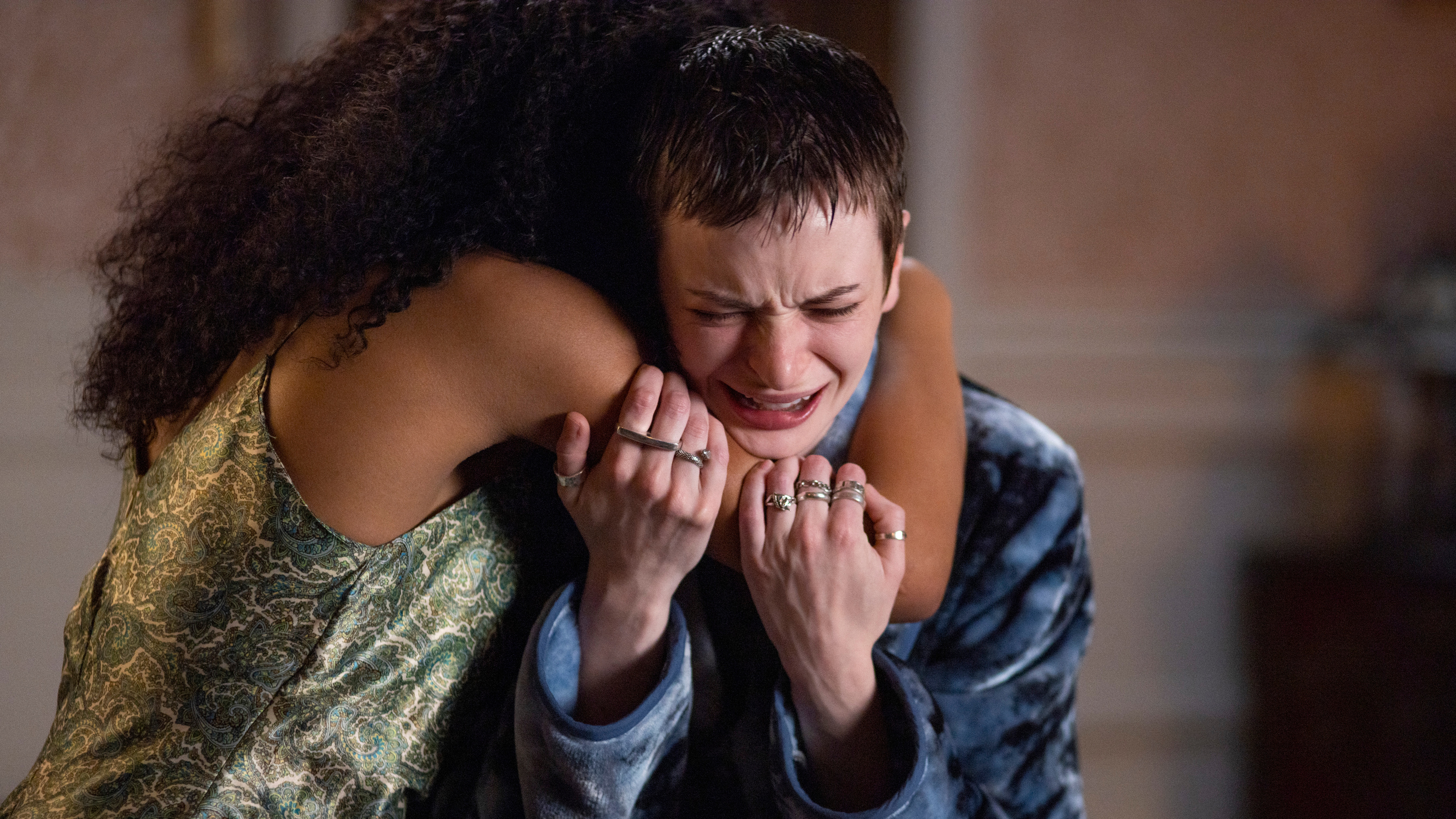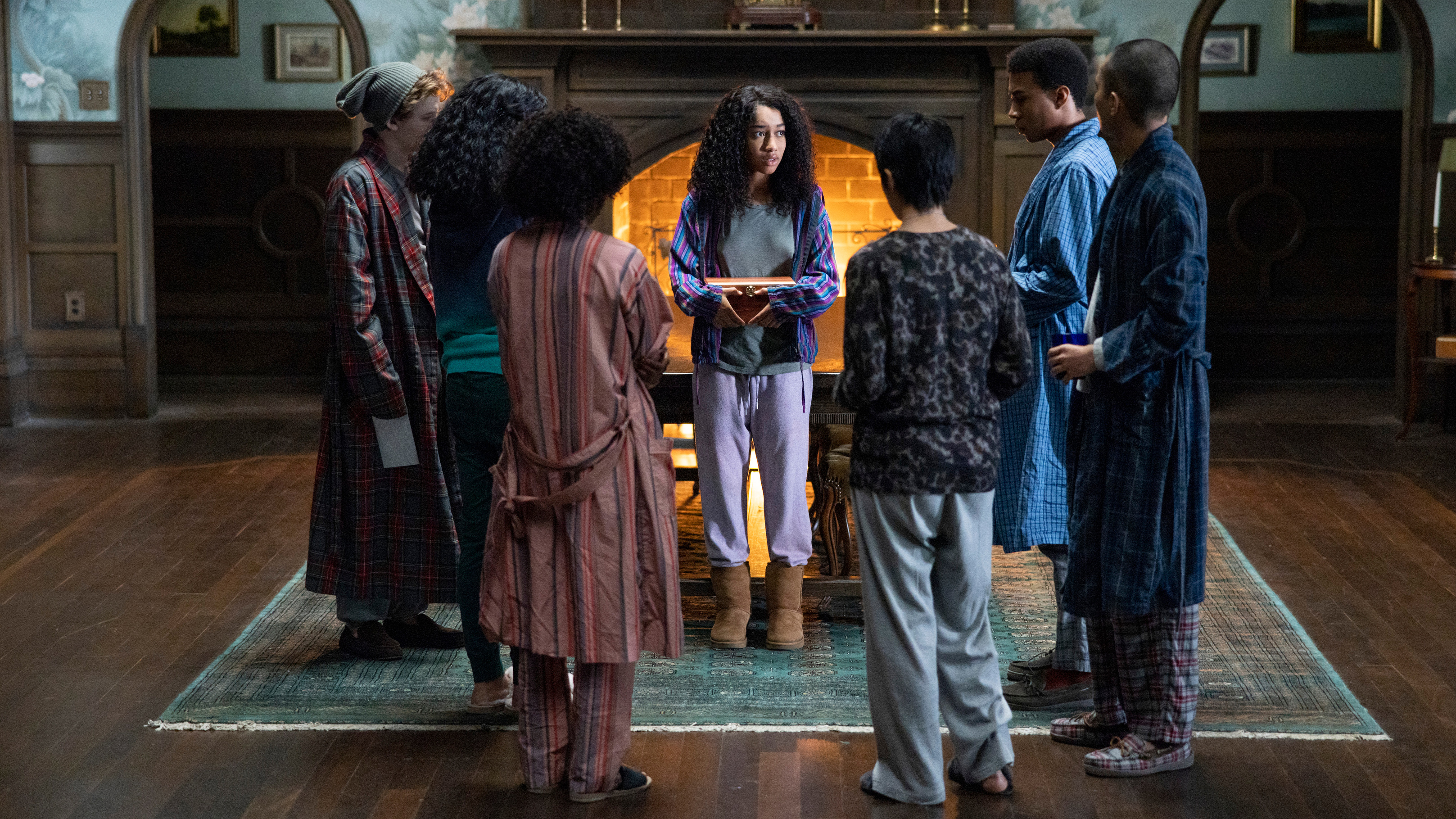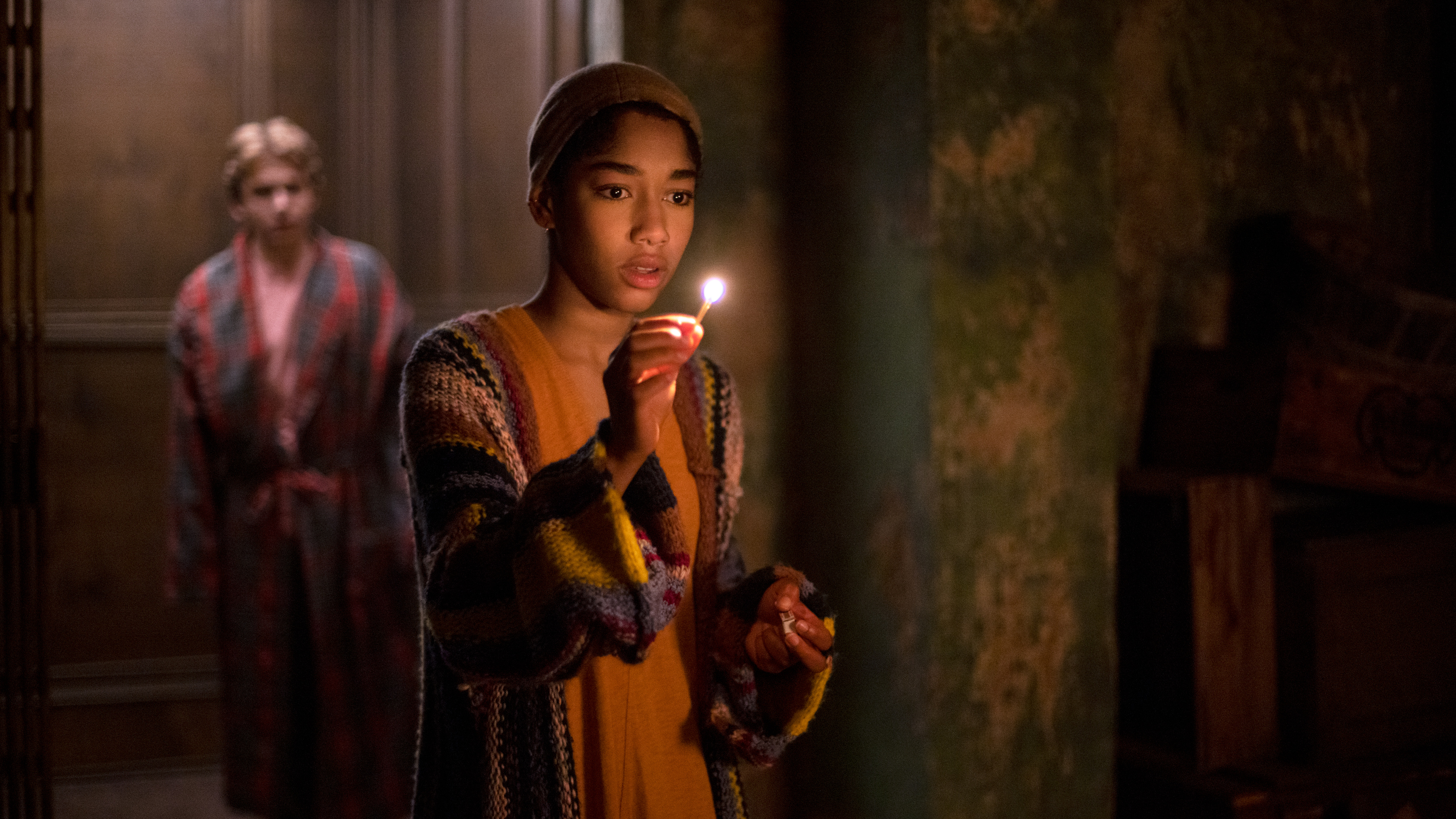Netflix is still king when it comes to horror and The Midnight Club proves it
Opinion: Mike Flanagan proves he's still the master of the spook and the scare.

"The sounds of stories are the sounds of life," explains Dr Georgina Stanton, played by horror icon Heather Langenkamp, nicely outlining the theme threaded throughout Doctor Sleep director Mike Flanagan's latest series for Netflix.
Where the horror maestro's previous works explore the nexus between religion, family, romance and death, The Midnight Club examines storytelling as a way to explore our relationship with the great beyond.
At this point in his career, Flanagan's devout followers flock to his signature style, a tapestry of scares drenched in shadow and melancholia in monologue. Fans know what to expect and revel in it. You'll feel a shudder of genuine terror one moment then weep the next. Of particular note are his episode fives which always spin the plot on its head, devastating fans.
And, while some of those factors remain in his newest offering The Midnight Club isn't a retread of his greatest hits. Like all of his works, however, this is a long-term passion project which began when he read the book as a teen and created for the screen together with regular collaborator Leah Fong,
Flanagan's take on Christopher Pike's novel swerves into new territory by adapting not only the content (granted, the show is a remix of many Pike novels but the main story stays the same) but the ambitions of its source material.
At time of release in 1994 Pike's tome divided readers based on its lack of conventional horror tropes. This Netflix series will no doubt do the same as Flanagan and Fong set aside the blueprint from the Haunting of Hill House, Bly Manor, and Midnight Mass adopting a subtle approach to the fright.

Gone is the relentless stream of heart-lurching scares and soul-destroying plot twists, replaced by a slow-burn tale of terminally-ill teenagers coming to terms with mortality. But make no mistake: you might not jump off the couch every five minutes but this show unsettles in a way that buries beneath your skin as it tugs at the heartstrings.
Sign up for breaking news, reviews, opinion, top tech deals, and more.
Setting the scene for a scare
We open with an introduction to Illonka (Iman Benson), a teenager on the precipice of college who receives a terminal diagnosis and takes up residence at Brightcliffe, a hospice for young people headed by Langenkamp's Dr. Stanton.
Here she meets the rest of the residents, Kevin (Igby Rigney), a high school prom king, Anya (Ruth Codd), a sarcastic, foul-mouthed rebel, Amesh (Sauriyan Sapkota), a gaming fanatic, Natsuki (Aya Furukawa), a sweet teen who's struggled with mental health, Sandra (Annarah Cymone), a Christian whose faith puts her at odds with the group, Spence (Chris Sumpter), an HIV-positive gay teen from a conservative family, and Cheri (Adia), a cello player with family issues. Together this diverse cast of teens go by "the midnight club".
They meet in the Brightcliffe library every night to tell stories, with a promise that whoever dies next will try everything within their power to contact the group from the afterlife. The premise packs plenty of opportunities for Flanagan's frightful jump scares to emerge, and they do.
Occasionally. Natsuki's story, a riff on Japanese ghost girl horror, is almost exclusively jump scares. It's so stuffed with jumps the club interjects, cutting her off for going over the top. Likewise, Anya's story, "The Two Danas" includes a solitary chest-lurch that's classic Flanagan involving a signature mirror, but the rest of the show’s terror lingers in the predicament of the club.

Unlike his previous series Midnight Mass, Flanagan only directs two episodes, handing the reins to trusted collaborators who each bring their own flair to the story. It's the closest we've come to a Flanagan anthology series (Flanthology??) with each episode's midnight yarn around the fire offering its own distinct moral, linked to the specific teller.
This bricolage of styles lends a welcome dynamic to the series. Each director highlights the different genres of the stories, mimicking real-life movies. It's a clever touch that brightens up the pace. Kevin's tale, "The Wicked Heart" apes the style of David Fincher and is downright upsetting, a brutal serial killer story told over several episodes. Sandra's "Gimme a Kiss" is a 1940s fast-paced detective tale modeled after The Maltese Falcon. Spence's "The Eternal Enemy" is a James Cameron-influenced sci-fi flick with a queer edge. Each of these self-contained tales recasts the actors into new roles, giving them a chance to flex their muscles. All of the main cast attack these opportunities with relish, but Langenkamp is a real highlight as she sheds her main role to play two different detectives.
Fans of A Nightmare on Elm Street have longed to see the actor reprise her role as Nancy Thompson (this writer included). It would be a disservice to the writing and her performance to suggest Stanton is a copy, a simulacra of Nancy, but she is flecked with aspects of her kindness and survival instinct. Similarly to her role in the second Nightmare sequel, Dream Warriors, where she helped teens fight Freddy in dreams, she shepherds these teens through the experience of dying. It's a nice nod to see her appear in their stories instead of their dreams. Langenkamp is magnetic, grounding the series with a likable warmth that makes you wish she appeared more frequently.
Getting the band back together
A handful of recognisable Flanagan veterans appear in supporting roles. Zach Gilford plays Mark, a nurse who befriends Spence, along with Samantha Sloyan as Shasta, a naturopathic mentor for Illonka who lives on the periphery of the Brightcliffe property. The latter, like Langenkamp, is a mesmeric addition to the series. Sloyan's deliveries make you long for her to deliver a Flanagan monologue, which she doesn't quite get the opportunity to do here. Elsewhere, fans will recognise a slew of other Flanagan favourites in cameos: Robert Longstreet appears as a custodian, while Rahul Kohli, Henry Thomas, Alex Essoe, and Kate Siegel (or what sounds suspiciously like her) pop up briefly in the teens' stories.
This is the closest Flanagan has come to homaging the teen horrors of the 1980s and 1990s, and it's likely to draw unfair comparison to last year's Fear Street movie trilogy and Stranger Things season 4. Both go heavy on the nostalgia, gore, and scares, something The Midnight Club avoids for the most part. It does pack in easter eggs, of course. One character's bedroom wall is plastered with movie posters based on Stephen King novels and another reads one of his books, a nod to Flanagan's past adaptations.

Even the Flanagan signature degloving scene (which the director always includes) is constructed out of homage. But what's more interesting over those explicit references is the simple fact this is a story about the restorative power of storytelling itself. Here we have a community of kids who share their deepest, darkest secrets, buried in the themes and characters of their chosen fables.
In that sense, it’s a reference to Flanagan’s Midnight Mass, which provided a communal experience for many. The outpouring on social media following its release saw fans connect over the way its story affected them, even chatting with Flanagan himself. The Midnight Club teens might not have Twitter or Tiktok to debate their demise, but they unite all the same, across a table, exposing their truest selves.

So what of Flanagan's monologues? They're here in a truncated fashion, but often the show's most moving words are other people's. Song lyrics, poems, movie quotes pack the biggest emotional wallop. Illonka and the janitor volley quotations back and forth in one tender moment, trying to reconcile the futility of words in the presence of death. "Your friend, she lived deep and she was kind, even when she was in a lot of pain," says Longstreet, proving sometimes less is more, "That's hard to do. That's beautiful."
The series' relaxed pace provides a broad canvas for its characters to develop – a delight, as there's no rush for big plot points. That scant plotting might turn off viewers expecting more, a hurdle compounded by its ten-episode length. Illonka's quest to discover the truth about why she came (by learning about a young woman who left the facility completely healed) slows at times, when it could have wrapped sooner, but it never drags down the atmosphere or mood.
A hefty trim down to seven or eight episodes might sustain those dwindling viewers tempted to abandon the show around the mid-way point, but by this stage, the purpose of the show is clear. The Midnight Club doesn't aim to dazzle with twists, turns, or insomnia-inducing frights. Its message boasts a more straightforward alchemy – the relevance of storytelling in our mortality. We are never gone if we're interwoven into other people's lives. After all, their stories are where we live after we die.
The Midnight Club is out now on Netflix.

Gem Seddon is a Seattle-based freelance entertainment writer with bylines at Vulture, Digital Spy, TechRadar, GamesRadar+, Total Film, What to Watch, and Certified Forgotten. Librarian by day, scribbler by night, Gem loves 90-minute movies, time travel romance, single-camera comedy shows, all things queer, all things horror, and queer horror. Alien and Scream are tied as her all-time favourite movie. She won't stop raving about Better Things.